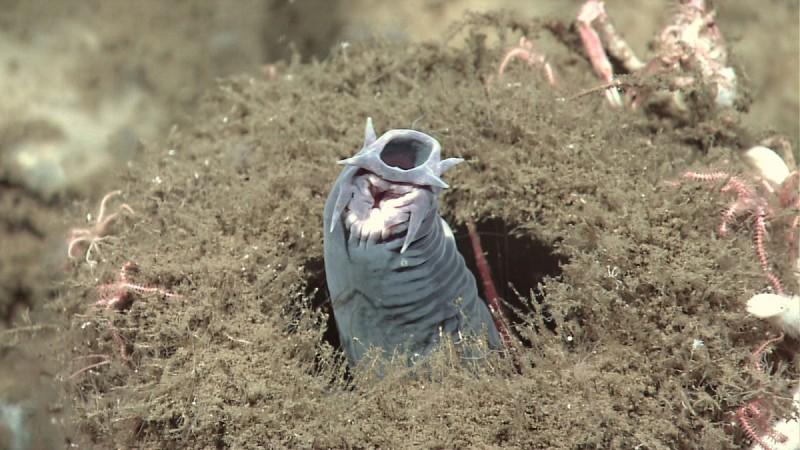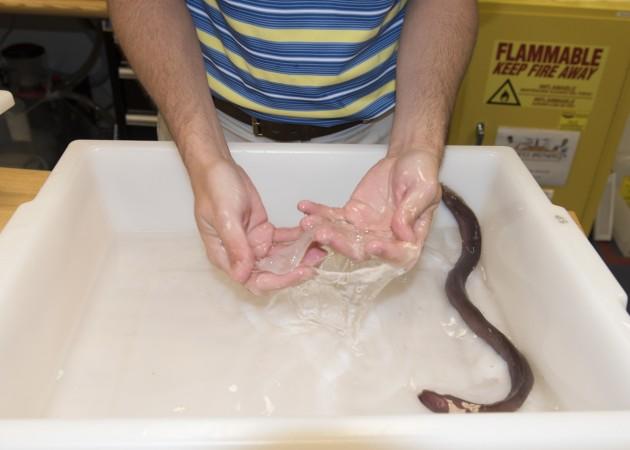
The US Navy has taken inspiration from a certain type of eel-shaped fish and created a kind of synthetic slime that can stop and trap small boats in the water.
This military grade slime will find its way to propeller blades and clog them, stalling boats. The slime itself will be completely synthetic but work in the same principle that hagfish slime works.
The hagfish, for those who are unfamiliar, is a long, eel-like fish that is a ferocious master scavenger. It is one of the few creatures that live in the deep sea that has seemingly skipped or even sidestepped evolution, for about 300 million years, it has remained unchanged, notes the Smithsonian.

As a scaleless ocean-floor dweller, it secretes a type of slime from the side of its body that can suffocate its attacker and even kill it. It works by expanding on contact with water and expanding to form a dense, sticky gel. This gel can expand inside a small shark or other predatory fish and even crabs, slowly killing them off. A report by Popular Mechanics notes that the slime can swell to about 10,000 times its original volume.
"Researchers have called the hagfish slime one of the most unique biomaterials known," said Materials Engineer and co-creator of the slime, Ryan Kincer. "From a tactical standpoint, it would be interesting to have a material that can change the properties of the water at dilute concentrations in a matter of seconds."
Hagfish slime works because of the way it is composed. There are two main ingredients that go into the protein-based goo—mucin and a thread. The "threads" work much like coiled springs that get activated once in contact with water. It unravels and quickly expands. It is closely related to the same material that goes into spider silk or even Kevlar, notes the report. Kevlar is a synthetic string-like material that is used right now to reinforce rubber. It is also famously used in bullet-resistant protective gear.

When hagfish slime is secreted, the mucin starts trapping water, cutting off the flow of liquid between small channels made by thread dispersion. "The interaction between the thread, mucin, and seawater creates a three-dimensional, viscoelastic network. Over time, the thread begins to collapse on itself, causing the slime to slowly dissipate." said Kincer.
According to the report, Kincer and biochemist Josh Kogot are tasked with making a weaponised version of the slime. It is intended to be used to trap suspicious enemy boats by expanding inside the moving parts of the boat's propellers.
As of now, the Navy reportedly uses plastic ropes and nets to stop boats, it is fired using a pneumatic launcher, that will eventually tangle up the propeller blades. This method is not only risky, it is also dangerous to the water. Small pieces of plastic ropes and nets are among the most widely seen pieces of ocean garbage. The slime could be a better option, however, there was no mention of this synthetic slime's environmental impact.
Apart from trapping boats, "the synthetic hagfish slime may be used for ballistics protection, firefighting, anti-fouling, diver protection, or anti-shark spray. The possibilities are endless," says Kogot.

















